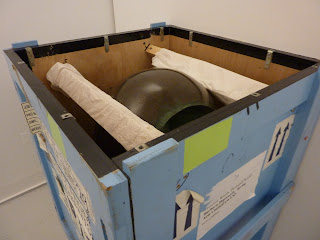This year's celebration of professional artists in Ryedale is well under way with exhibitions in local galleries and open studios. Duckett and Jeffreys Gallery in Malton is host to one of the shows, where my work was selected this year. It is an interesting show, with some great work by several artists including Gill Dearman, (textiles) Serena Partridge, maker of tiny hand stitched garments with reference to historical costume and museum curatorship, newly graduated Steff Mitchell, Catherine Scriven who has made an new digital photocomposition for the show and Lyn Wait, showing a film.
The following four images are of the work accepted for this year's ArtFest:
Boundaries, acrylic on gesso, on board
Track, acrylic on gesso, on board
Lost, acrylic on gesso, on board
Low ll, acrylic on gesso, on board
Anyone reading this who is interested in finding out more about ArtFest and the participating artists should go to the website and blog provided by The Gallery at Ryedale Folk Museum:
www.thegalleryatryedalefolkmuseum.blogspot.com
www.ryedalefolkmuseum.co.uk















